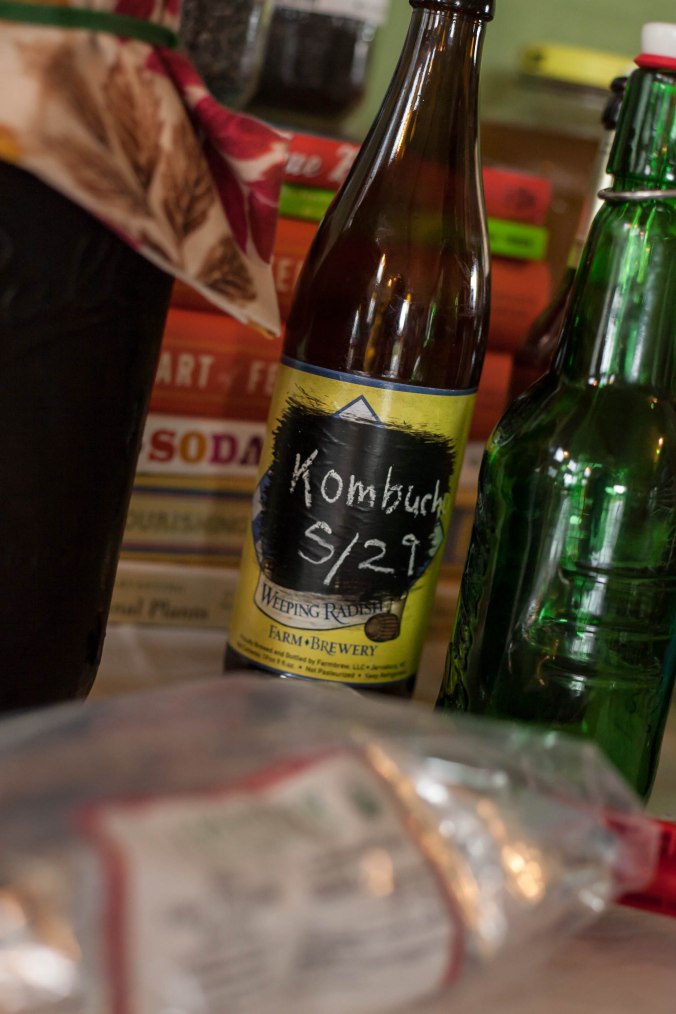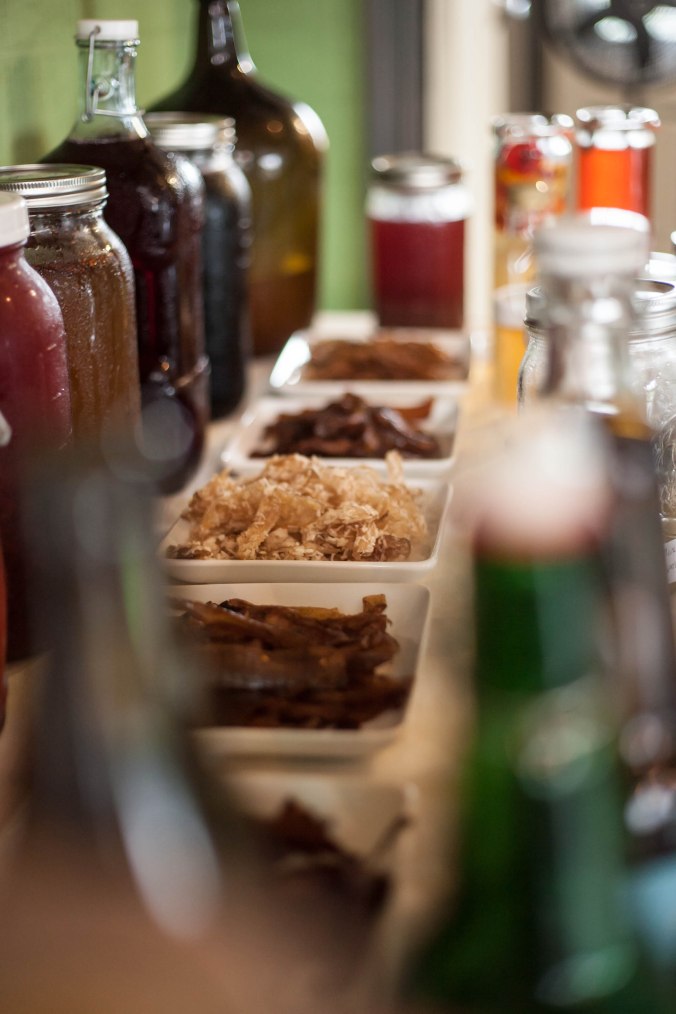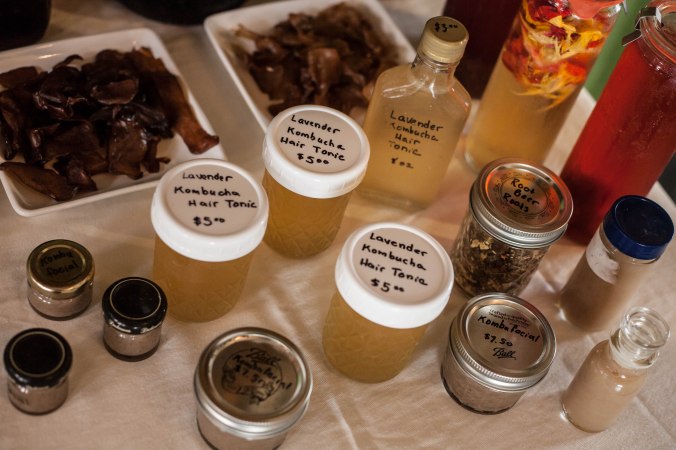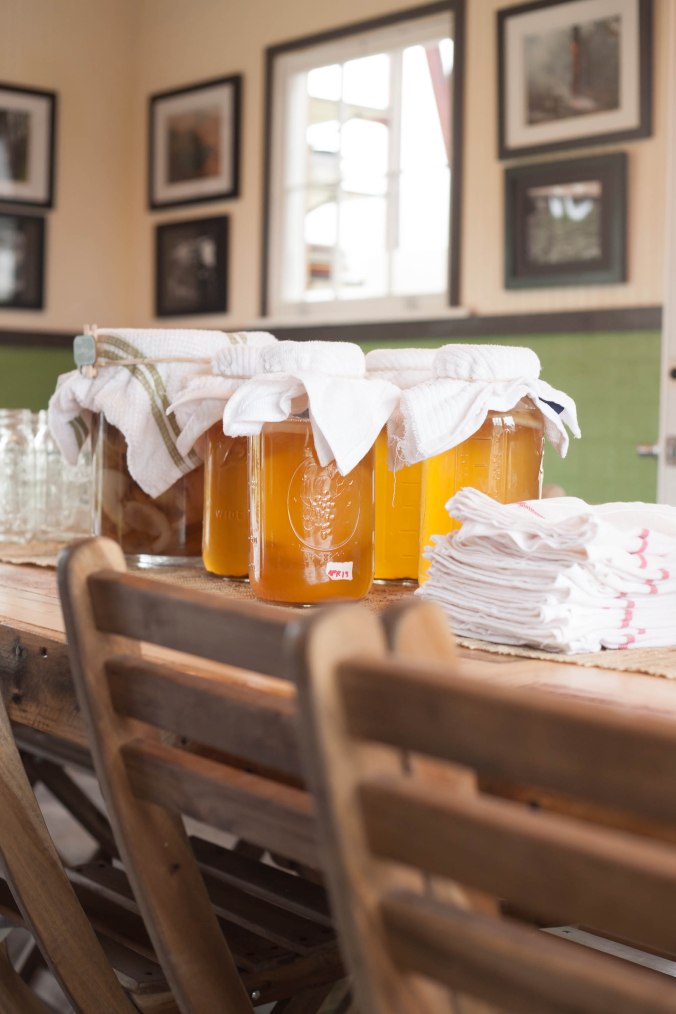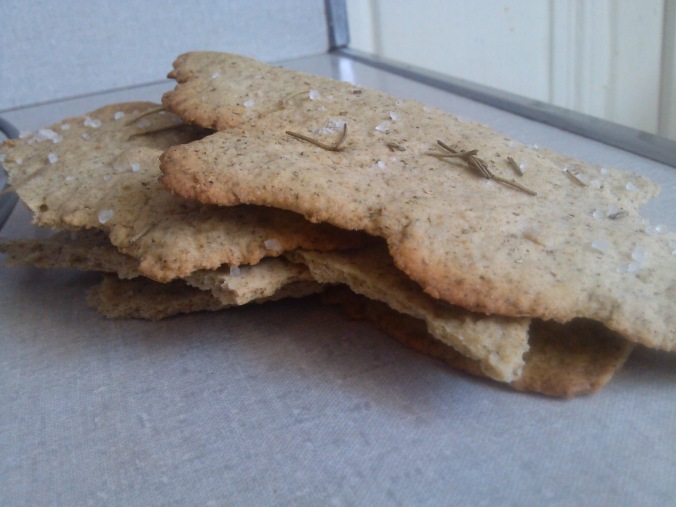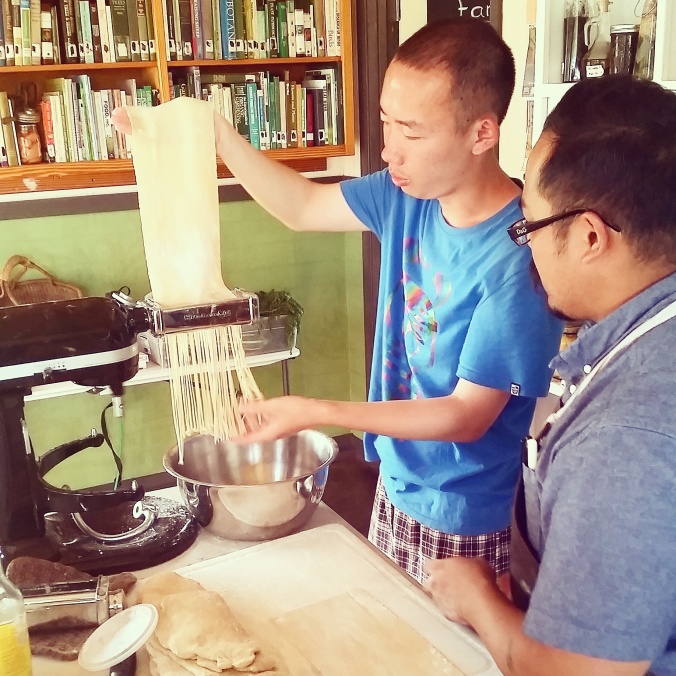Need a scoby to make your homemade hair tonics and face pastes?
Click here!
Dear soda-sippers and lovers of delicious beverages,
If I didn’t get this post written soon, I think ya’ll were gonna ride me out of town on a rail!
This is the long-awaited and dearly requested kombucha post. Yes, the recipe packet you have been asking for the most! We’ve had several kombucha Food Labs on the farm, a number of satellite classes at various off-campus locations, and we have more scheduled into January 2015.
Photos in this post were shot by Sami Roy Photography, one of the proficient and expert photographers on the farm!
You can do more with kombucha than just drink it as a fizzy, original or variously-flavored drink. You can also use the scoby to make chewy, gummy candies that are flavored any way you like (or crispy candies, if you prefer!). You can make fruit gelatins, jelly candies, or even move out of the kitchen and make hair tonics and face masks! And for those who want to know if there is alcohol in kombucha, yes – about the same level as in a loaf of bread or a bottle of Coke. So, microscopic levels.
Basic Kombucha Recipe
Download the Kombucha Class Packet here
This is a very basic kombucha recipe and similar to the hundreds you’ll see replicated across the internet. Use filtered, purified water; use organic tea and sugar. This is non-negotiable – otherwise your revitalizing, detoxifying probiotic health drink will become a toxic, poisonous potion that was a waste of time to prepare! At least a quarter of your tea leaves should be black – this brew in particular feeds the kombucha scoby, although the bacteria seem to tolerate varying amounts of other tea leaves. Experiment with a variety of leaves and see what works best for you; personally, I’ve settled on the flavor profiles of organic Assam black – mellow, vegetal – and organic China green – fruity, light, notes of citrus.
Heat three quarts filtered water to boiling on the stove; remove and set aside for five minutes.
Add 4 teaspoons black tea and 4 teaspoons green tea or white tea or a mixture of both; stir to combine, let sit for five minutes. Alternately, use 4 black tea bags and 4 green tea bags. (See end of post for my recommended teas)
Measure three quarts cold or room temperature filtered water into a large heat-proof container. Place a mesh sieve over the pan if your tea leaves were loose and not in tea bags.
Pour the hot, steeped tea in to the cold water. Remove the sieve and set aside; to the warm tea, add 2 cups of white sugar and stir thoroughly and steadily with a wooden spoon until sugar is completely dissolved.
Let the tea cool to room temperature, or at least about body temperature (96°). Pour it into a large, clean, glass container. Use only clear glass for brewing kombucha.
Add 2 cups of kombucha and one scoby. Cover the lid tightly with a clean, tight-weave towel and secure with a string or rubber band. Fruit flies love kombucha and will try very hard to get inside the container, so be aware!
Set in a cool, undisturbed area (about 70-85° is perfect for these bacteria to multiply) for about two weeks. You can taste test your fermenting tea at intervals and find your favorite number of days for fermentation. Ambient temperature and other factors may impact the fermentation of your tea, and every various way you try it will be delicious and wonderful!
Download the Kombucha Class Packet
This includes:
Basic Kombucha
Flavored Kombucha: Seven Food Lab Favorites
Kombucha Fruit Gummies
Probiotic Skin Healing Masque
Hair Conditioning Treatment (Hair Tonic)
Scoby Candy
Kombucha Gelatin
A moment to brag on the delicious Frontier Teas that I recommend for this kombucha…
I’ve done some extensive taste-testing, and I am very particular about my kombucha teas. The final teas I have settled on produce a kombucha so light, so airy and fruity, so delightfully flavored, that it has won best-taste from even the snobbiest of my clientele – and the most devoted kombucha haters!
Fair-Trade Certified, Organic Frontier China Green Tea (light, fruity, vegetal)
Fair-Trader Certified, Organic Assam Tea Tippy Golden (Black) (delicate, mellow, earthy)
For sugar, I use either
Itaja Organic Fine Granulated Sugar
or,
Wholesome Sweeteners Organic Cane Sugar
And as one of my favorite flavorings of all time:
Frontier Whole Elder European Berries
My top fermentation book recommendation, available at all my classes:
And an explosive new book with recipes for kombucha that will blow your mind! (Book review pending here on the blog!)
Kombucha Revolution: 75 Recipes for Homemade Brews, Fixers, Elixirs, and Mixers
Brewing and sipping,
Mrs H
Face it, you like us
Gram it instantly – #eatorganic #farmandhearth
